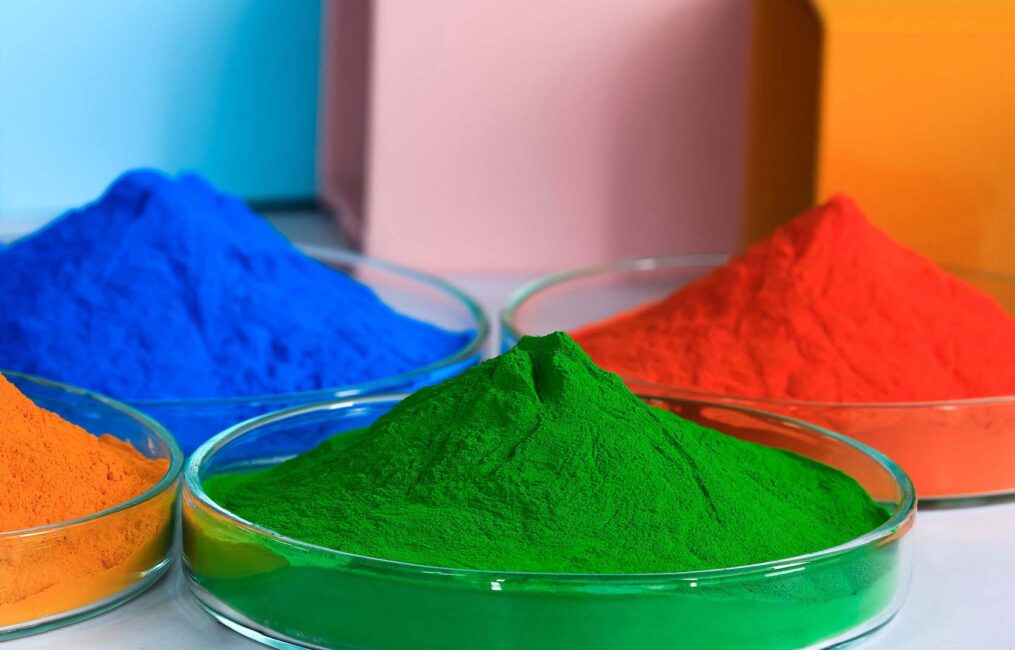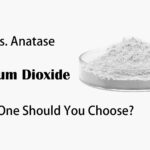O Versátil Mundo do Óxido de Ferro Vermelho: Um Guia Completo
O óxido de ferro vermelho é um pigmento inorgânico versátil e atóxico, conhecido por sua cor vibrante, durabilidade e estabilidade. Amplamente utilizado em tintas, plásticos, borracha, têxteis e construção civil, ele aprimora o desempenho e a estética dos produtos. Produzido por via seca ou úmida, oferece excelente resistência à luz e ao calor, produtos químicos e intempéries, tornando-o indispensável em todos os setores.

O óxido de ferro vermelho, um pigmento inorgânico vibrante e versátil, desempenha um papel crucial em diversos setores devido às suas propriedades excepcionais e ampla gama de aplicações. Da construção civil à cosmética, este pigmento provou ser indispensável. Nesta publicação, abordaremos as características, os métodos de produção e os diversos usos do óxido de ferro vermelho, integrando insights detalhados sobre suas aplicações em diferentes setores.
O que é óxido de ferro vermelho?
O óxido de ferro vermelho, quimicamente conhecido como α-Fe2O3, é um pó vermelho ou vermelho escuro com densidade de 5,24 g/cm³ e ponto de fusão de 1565 °C. É insolúvel em água, não tóxico e apresenta excelente poder de cobertura e tingimento, perdendo apenas para o negro de fumo. Sua superior resistência à luz, resistência ao calor, resistência a álcalis e resistência a ácidos diluídos e gases corrosivos o tornam um pigmento e corante ideal.
Métodos de produção
Processo Seco
O processo a seco é um dos métodos tradicionais de produção de óxido de ferro vermelho. Inclui diversas técnicas:
- Método de Calcinação de Vitríolo Verde:Utiliza licor de decapagem de aço e subprodutos do método do ácido sulfúrico para produção de dióxido de titânio.
- Método de calcinação de amarelo de ferro:Envolve a calcinação de pó amarelo de ferro seco para produzir óxido de ferro marrom vermelho.
- Método de Calcinação de Ferro Negro:Envolve calcinação em alta temperatura de ferro preto lavado para oxidar FeO em Fe2O3.
- Método de Calcinação de Sulfato Ferroso-Carvão Sódio: Mistura carbonato de sódio (Na2CO3) e vitríolo verde (FeSO4·7H2O) em uma proporção molar de 1:1,25, seguido de calcinação.
Processo úmido
O processo úmido é mais complexo, mas produz produtos de maior qualidade. Os principais métodos incluem:
- Método do Sulfato:Envolve a criação de um cristal semente, que é então oxidado em um tanque de reação contendo uma solução de Fe2+.
- Método do Nitrato: Semelhante ao método do sulfato, mas usa nitrato como reagente, resultando em melhor desempenho do produto.
- Método de Ácido Misto: Um compromisso entre os métodos de sulfato e nitrato, equilibrando custo e desempenho.
Aplicações do Óxido de Ferro Vermelho
Na indústria de tintas
O óxido de ferro vermelho é um elemento fundamental na indústria de tintas, valorizado por sua cor vibrante, forte poder de tingimento e excelente estabilidade à luz. É amplamente utilizado em:
- Revestimentos Arquitetônicos: Para paredes externas e internas, proporcionando acabamentos duráveis e esteticamente agradáveis.
- Revestimentos Industriais: Incluindo revestimentos anticorrosivos e de alta resistência para metais, tintas de fabricantes de equipamentos originais (OEM) automotivos e revestimentos marítimos.
- Tintas Decorativas e Especiais: Como tintas para brinquedos, tintas para móveis e revestimentos decorativos, onde fornece cor estável e aumenta a longevidade dos produtos.
Na Indústria do Plástico
Em plásticos, o óxido de ferro vermelho melhora propriedades mecânicas como resistência, dureza e tenacidade. É utilizado em:
- Brinquedos e bens de consumo: Garantindo cores vibrantes e durabilidade.
- Embalagem: Fornecendo coloração estável e segura para materiais de embalagem de alimentos.
- Componentes automotivos e industriais:Onde melhora a aparência e o desempenho das peças plásticas.
Na indústria da borracha
O óxido de ferro vermelho melhora as propriedades mecânicas e a processabilidade de produtos de borracha. É utilizado em:
- Pneus e Produtos Industriais de Borracha: Aumentando a resistência ao desgaste e a longevidade.
- Produtos de borracha de consumo: Como solas de sapatos, luvas, vedações e vários produtos moldados, como rolhas de garrafas e bolsas de água quente.
Na Indústria Têxtil
O óxido de ferro vermelho é usado como corante e pigmento em têxteis, oferecendo:
- Cores vibrantes: Para tingimento de tecidos e serigrafia.
- Durabilidade aprimorada: Em fibras sintéticas e tecidos especiais como vinil e couro sintético.
Em Materiais de Construção e Construção
O óxido de ferro vermelho é amplamente utilizado como pigmento ou corante no setor da construção civil, revestindo superfícies de concreto internas e externas, como paredes, pisos e tetos. Também é parte integrante da cerâmica de construção e de cerâmicas, incluindo azulejos, tijolos para piso e telhas. Sua aplicação em cimento colorido, ladrilhos de concreto e terrazzo destaca sua importância na indústria da construção civil.
Aplicações Industriais
O óxido de ferro vermelho é amplamente utilizado em diversas aplicações industriais, particularmente nas indústrias de construção, borracha, plástico e tintas. É um componente essencial em cimento colorido, ladrilhos de concreto e terrazzo, além de desempenhar um papel crucial em tintas, revestimentos e produtos de ferragens.
Considerações ambientais e de segurança
O óxido de ferro vermelho é atóxico e ecologicamente correto, tornando-o adequado para uso em diversas aplicações sem riscos significativos à saúde. No entanto, os processos de produção, especialmente o método a seco, podem gerar gases nocivos, exigindo controles ambientais adequados.
Conclusão
O óxido de ferro vermelho é um pigmento multifacetado com amplo espectro de aplicações em diversos setores. Suas excelentes propriedades, incluindo durabilidade, estabilidade e não toxicidade, o tornam a escolha preferida de fabricantes em todo o mundo. À medida que as indústrias evoluem, espera-se que a demanda por óxido de ferro vermelho de alta qualidade cresça, impulsionando ainda mais inovações em sua produção e aplicação.
Seja na construção, manufatura ou design, compreender as capacidades e os benefícios do óxido de ferro vermelho pode ajudá-lo a tomar decisões informadas e alcançar resultados superiores em seus projetos. Seu papel no aprimoramento das qualidades estéticas e funcionais de produtos em diversos setores ressalta sua importância como um material industrial essencial.



